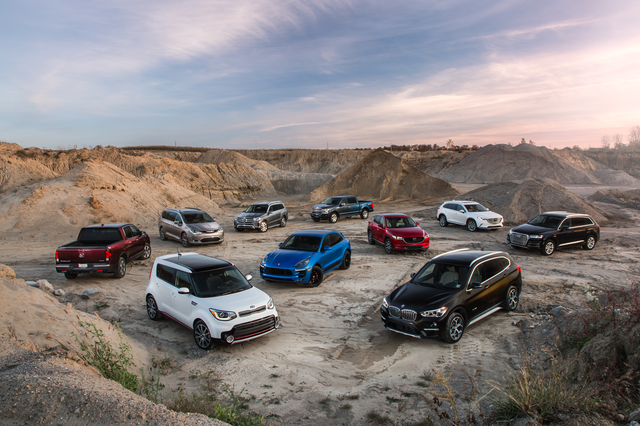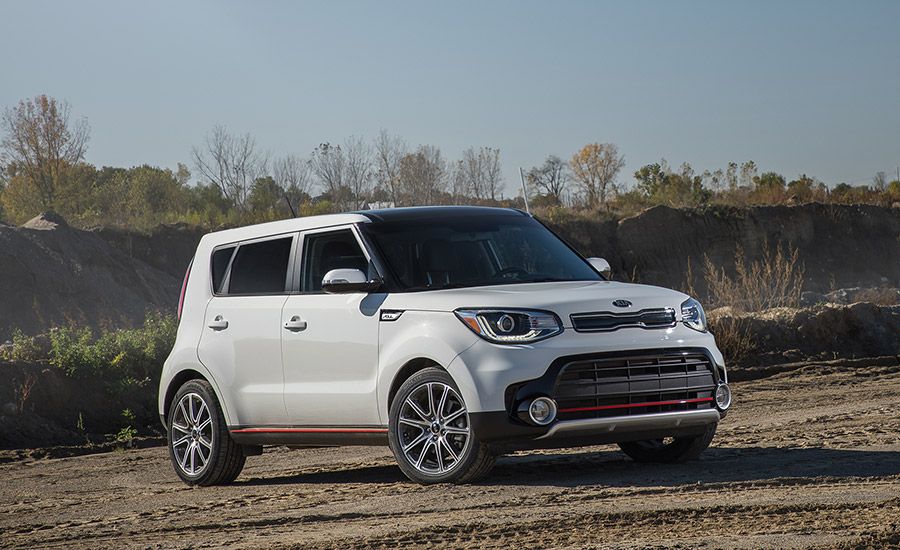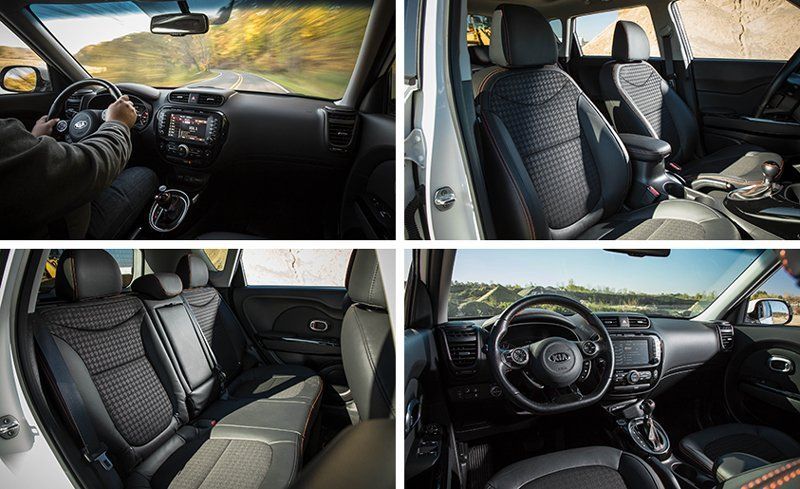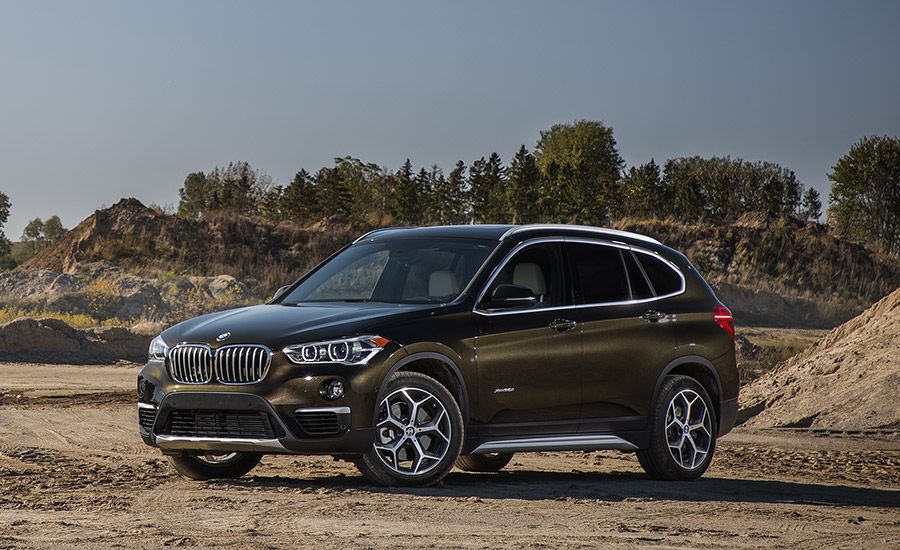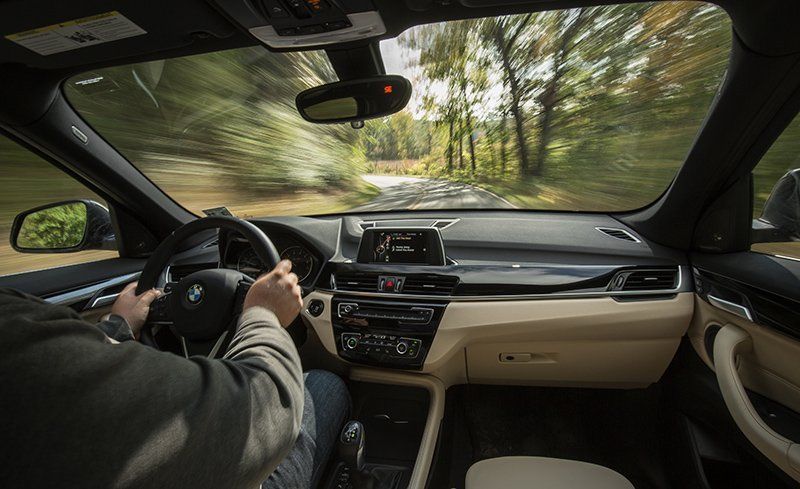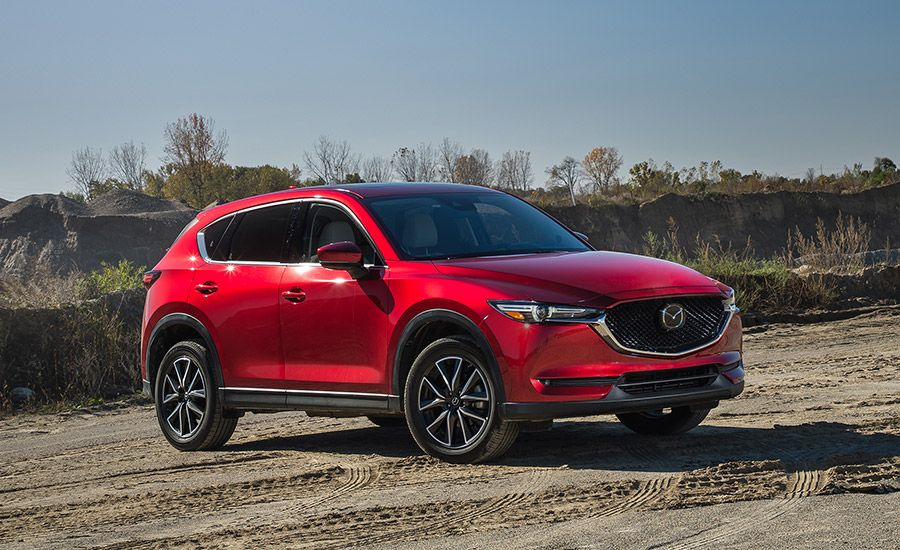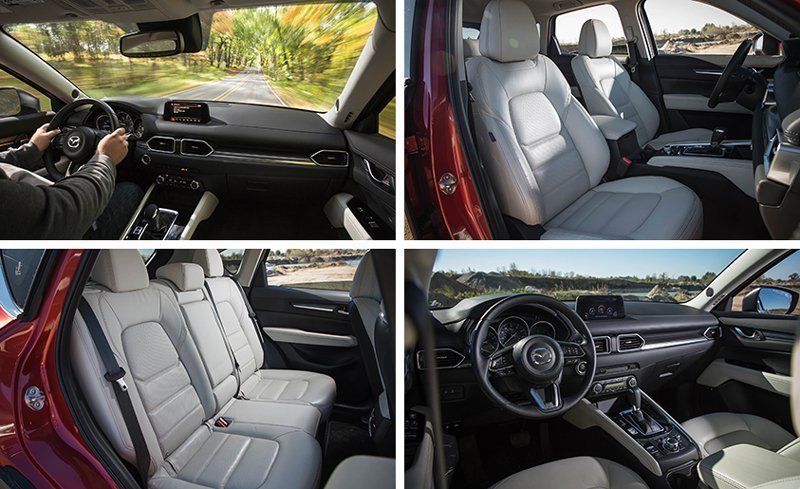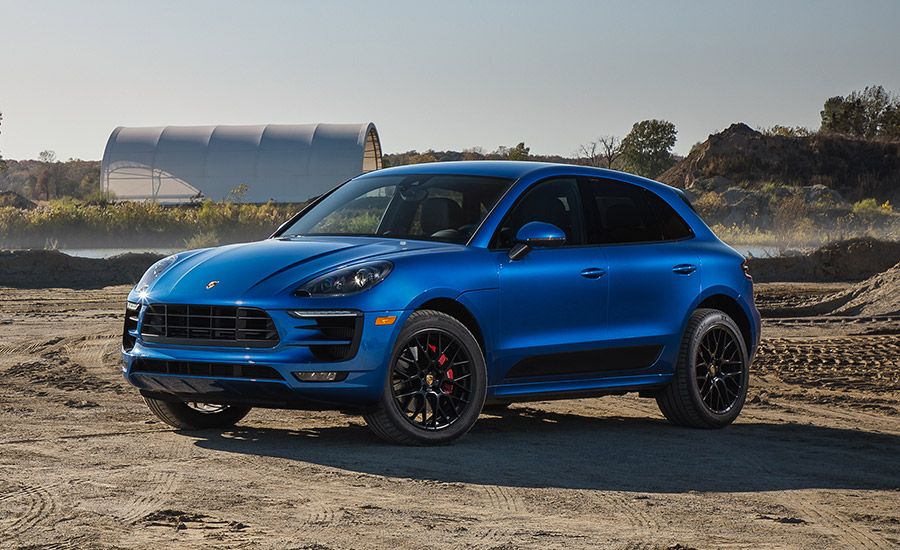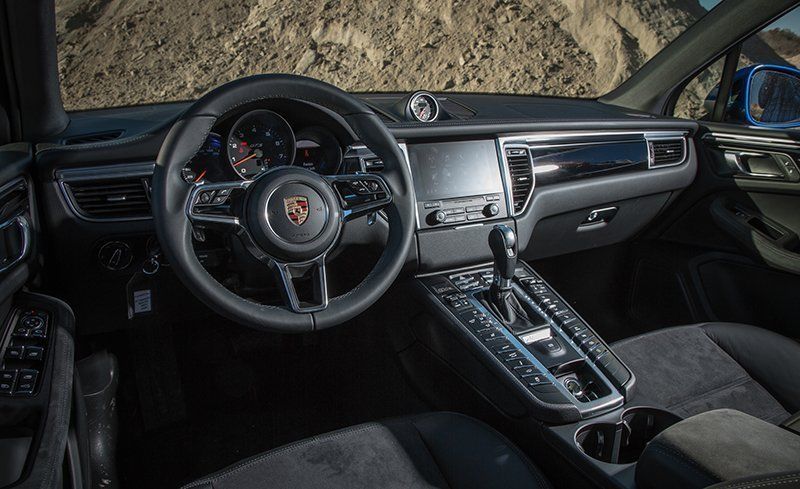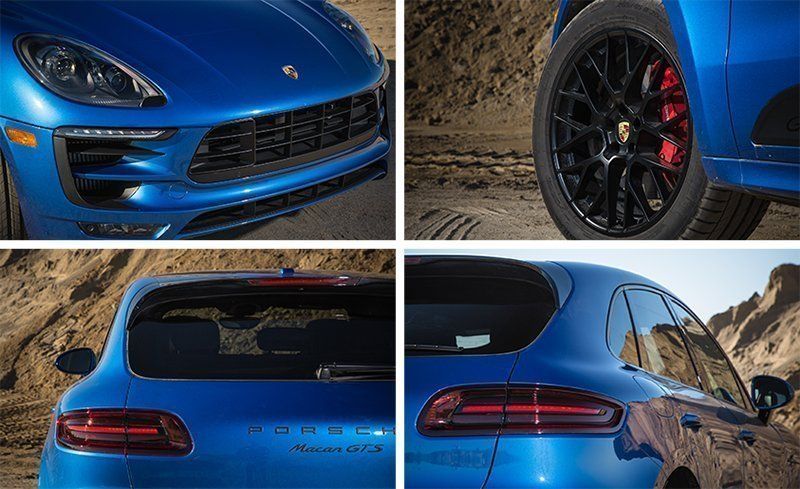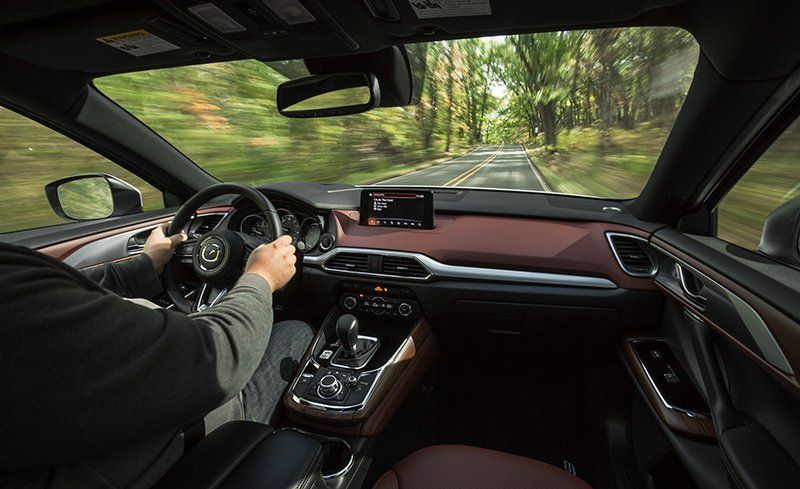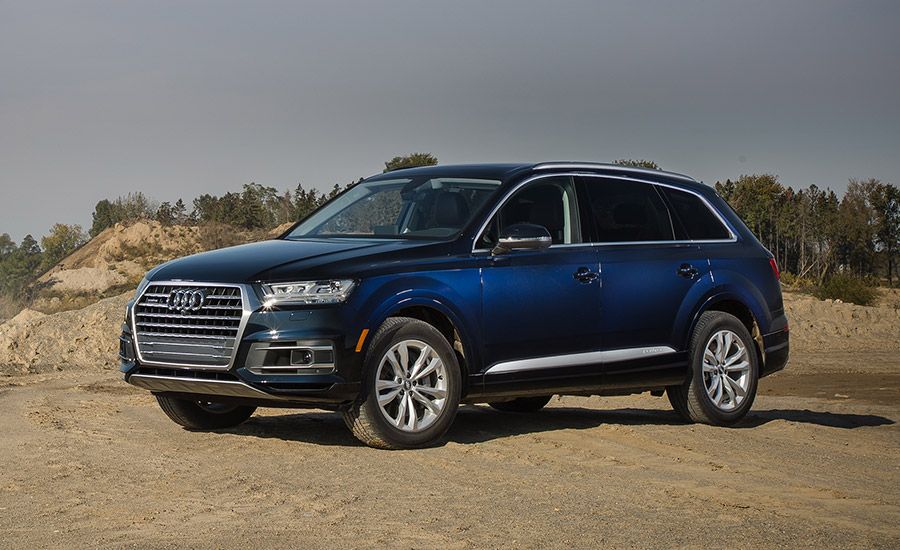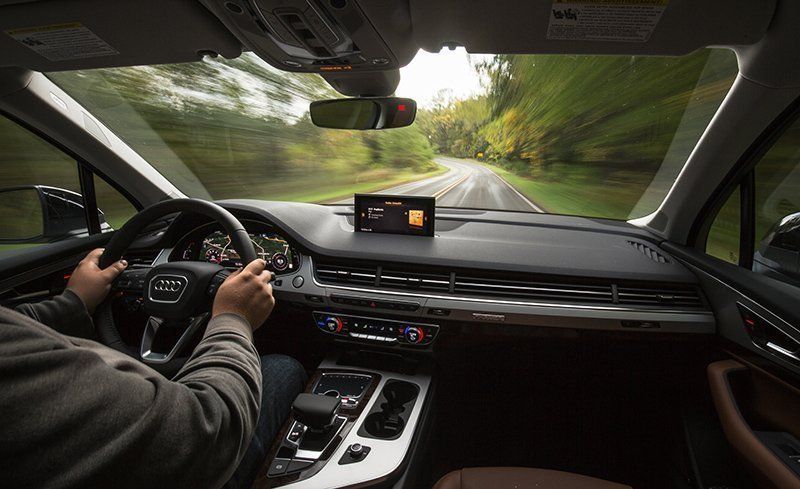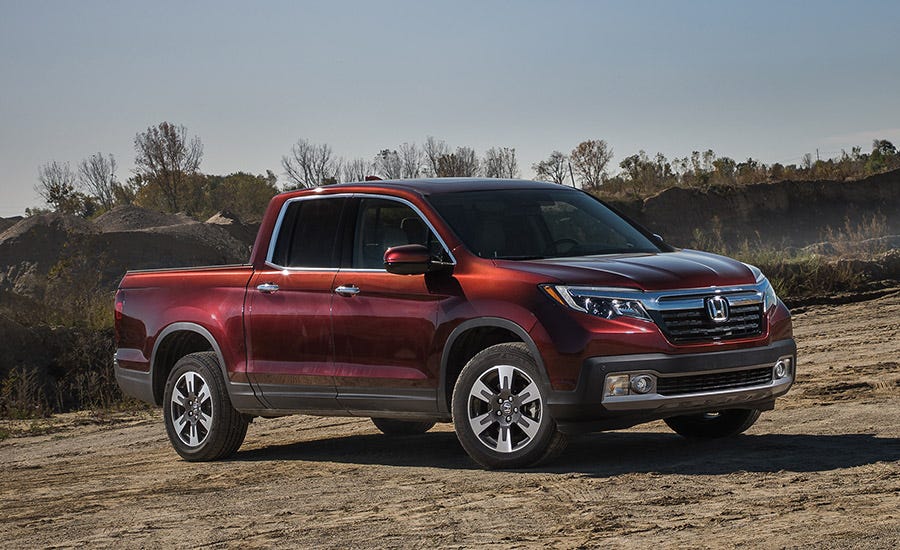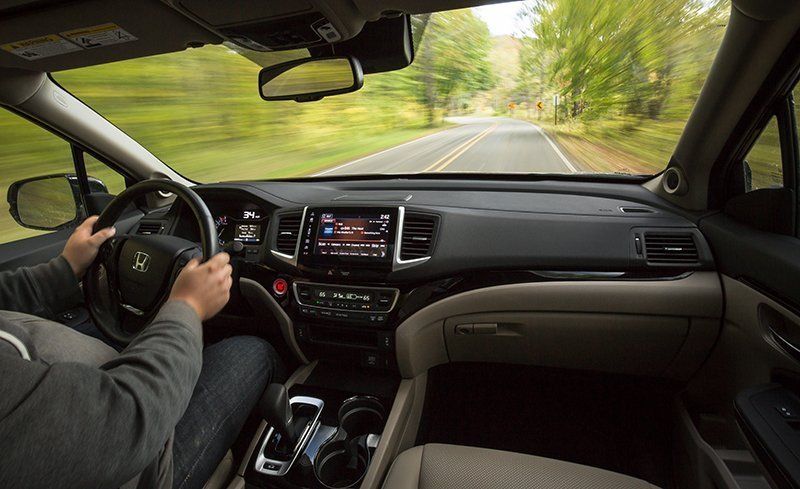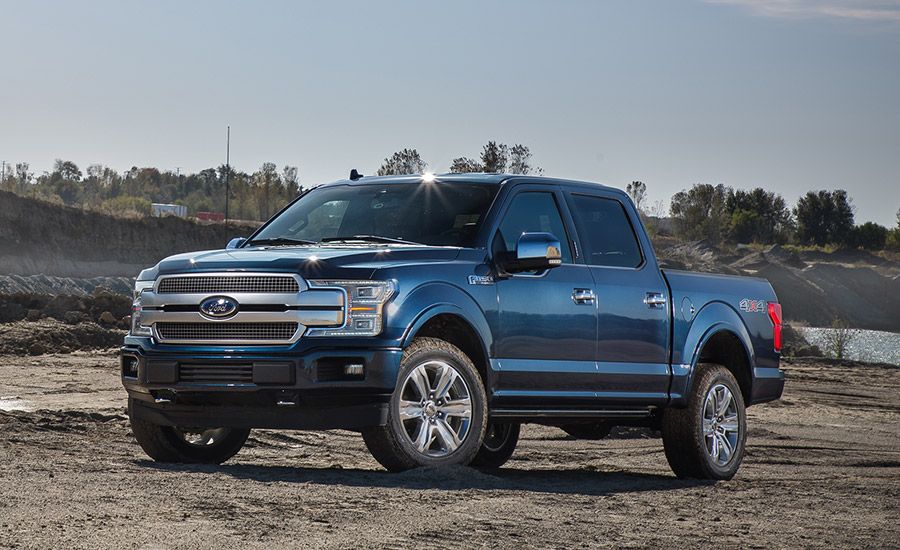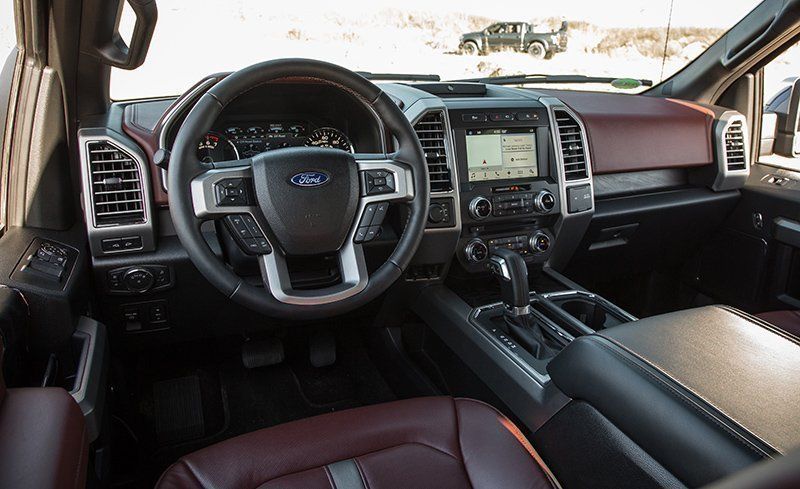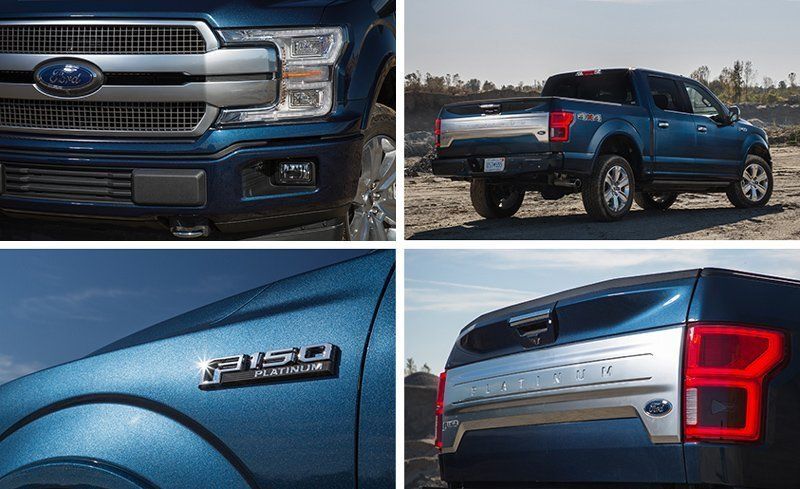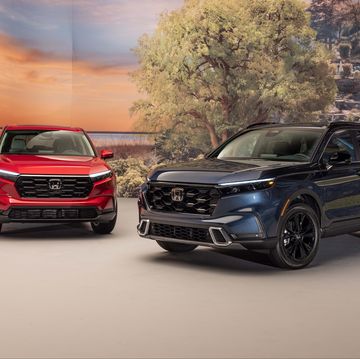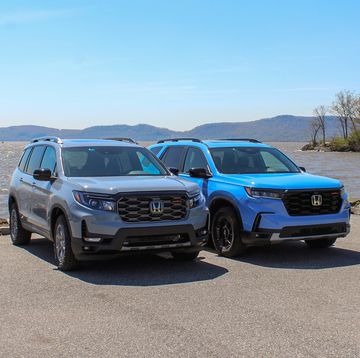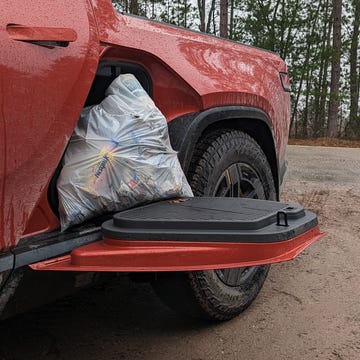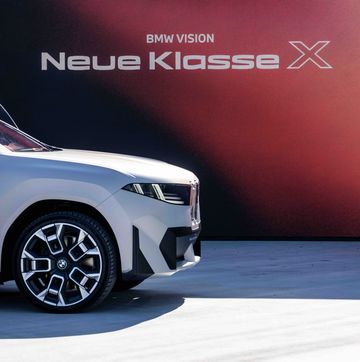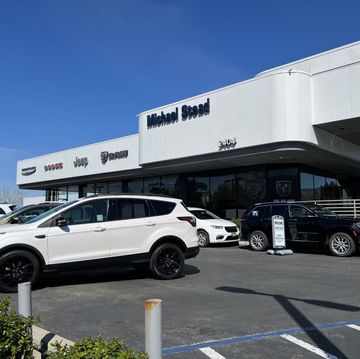Over the past year, trucks and SUVs have found themselves in even more households, with SUVs climbing farther up the list of top sellers than ever before, displacing compact cars and mid-size sedans in the process. Rushing to capitalize on the popularity of these vehicles and the higher prices they command, automakers continue to pepper the market with new entries. For 2018, in addition to a number of major redesigns to segment stalwarts—among them the Chevrolet Equinox and Traverse, Audi Q5, BMW X3, and Ford Expedition—a number of completely new nameplates joined the party, including the Toyota C-HR, Alfa Romeo Stelvio, Range Rover Velar, and Volkswagen Atlas.
Unlike the free-for-all format of 10Best Cars, where all 10 spots are open to any excellent entry, here we organize the vast market of trucks and SUVs into 10 categories: seven for SUVs, two for pickups, and one for vans. The SUV segments are broken down into subcompact, compact, and mid-size, each with a luxury and non-luxury sector, plus a combined large category, as the prices of rigs such as the Chevy Suburban and the Ford Expedition are fully luxury. We invite any all-new or substantially redesigned models with a base price less than $80,000—plus any that were eligible last year but weren’t available for evaluation—to prove themselves against last year’s winners in a weeklong face-off that involves close scrutiny, lots of data collection, and plenty of behind-the-wheel time by our entire editorial team.
To successfully ascend to the winner’s circle, vehicles need to impress in three ways. The first is by offering a strong value proposition—not to be confused with a low price, as we’re strong believers that vehicular excellence is worth paying for. It must also inspire in how well it fulfills its mission and that of the segment in which it competes. And, finally, it has to be engaging to drive. Not because the pickup truck or minivan that exhibits the least amount of body roll should win—after all, that type of dynamic behavior would likely be at odds with its job—but there’s no reason those with large families, large hobbies, or other reasons for driving a large vehicle should have an experience that’s less than confidence inspiring.
With thousands of miles driven, second- and third-row seats evaluated for space and comfort, cargo holds and interior storage pockets measured, and new features assessed, these vehicles are the 10 that comprehensively stood out from among their peers as the best currently on offer in their respective categories.
The Ground Rules
To determine our 2018 10Best Trucks and SUVs, we followed our usual 10Best procedure of inviting the previous year’s winners plus vehicles that are all new or significantly updated within each segment. Competing vehicles must have a base price of less than $80,000 and be on sale by January 31, 2018. Each competing vehicle is driven and fully evaluated by our entire editorial staff during our weeklong test, and winners have been determined via editors’ votes for which entrants best deliver across three key areas: value, driving enjoyment, and overall mission fulfillment.
Kia Soul: Best Subcompact SUV
It’s hard out there for a driver on a budget. New-car prices keep going up, wages remain stagnant, and, based on a cursory Google search of the values of various human body parts, a person needs to sell bone marrow and perhaps a wig’s worth of hair to come up with the cash to cover the cost of a basic new car. For buyers who crave the social and warranty benefits of a vehicle fresh off the lot, the market can look bleak. Enter the Kia Soul.
Pleasantly funky-looking with a usable rear seat and a healthy array of available high-rent features, the Soul redefines expectations for a subcompact SUV. The Kia’s cuboid form, blacked-out A-pillars, and unusual floating panel on its liftgate announce it as something special and strange; optional ambient interior lighting that can pulse in sync with whatever’s coming through the speakers reinforces that message. It is unabashedly odd in a class where entrants—mostly unsuccessfully—seek to emulate the gravitas of larger crossovers, and the Soul is made more charming by its willingness to lean into weirdness.
The fun doesn’t stop with the Soul’s design. While the 130-hp entry-level engine isn’t particularly robust, the available 201-hp turbocharged 1.6-liter inline-four with its seven-speed dual-clutch automatic is downright lively; accelerating the Soul from zero to 60 mph in as little as 6.3 seconds in our testing, it leaves every competitor in the dust. Even better, according to the EPA that engine is actually more efficient than both the naturally aspirated 1.6-liter and the midlevel, 161-hp 2.0-liter, and it returned 30 mpg during our real-world highway fuel-economy test. The turbo four comes standard in top-level Exclaim models (also denoted as “!”), but every Soul benefits from a compliant ride and a suspension that can handle curvy roads and tight corners with composure.
The absence of an all-wheel-drive variant is the Soul’s main deficiency, but it makes up for this shortcoming with a genuinely comfortable and useful interior. With an upright cabin, 39.1 inches of rear-seat legroom, and an available panoramic sunroof to make things airy, four adults can be comfortable in the Soul for hours at a stretch. The tall greenhouse and raised seating position mean that drivers have a wide-open view of the road ahead, and despite its objectively small footprint, the Soul’s vibe from the driver’s seat is more like that of a utility vehicle than a car.
In a segment in which too many entries feel like penalty boxes where dynamics were given little to no priority, the Soul is entirely its own animal. Fully realized, fun to drive, and replete with the kind of infotainment tech and other features that are typically reserved for pricier cars, it’s everything we thought we would never find in a subcompact crossover. And with even the fully loaded version ringing in at less than $28,000, you won’t need to sell part of your liver to afford one. —Annie White
Specifications
VEHICLE TYPE:
front-engine, front-wheel-drive, 5-passenger, 4-door hatchback
BASE PRICE:
$16,995–$23,695
ENGINES:
DOHC 16-valve 1.6-liter inline-4, 130 hp, 118 lb-ft; DOHC 16-valve 2.0-liter inline-4, 160 or 161 hp, 149 or 150 lb-ft; turbocharged and intercooled DOHC 16-valve 1.6-liter inline-4, 201 hp, 195 lb-ft
TRANSMISSIONS:
6-speed manual, 7-speed dual-clutch automatic with manual shifting mode, 6-speed automatic with manual shifting mode
CURB WEIGHT (C/D EST):
2900–3250 lb
PERFORMANCE (C/D EST):
Zero to 60 mph: 6.4–9.1 sec
Standing ¼-mile: 15.0–16.9 sec
Top speed: 115–130 mph
EPA FUEL ECONOMY:
Combined/city/highway: 27–28/24–26/30–31 mpg
BMW X1: Best Subcompact Luxury SUV
In the same way that Coca-Cola’s secret formula combines sugar, phosphoric acid, carbonated water, and other “natural flavors” into one of the world’s predominant beverages, BMW crafted its special and elusive Ultimate Driving Machine syrup from manual transmissions, inline-six engines, and rear-wheel-drive chassis. But lately, many of BMW’s concoctions aren’t tasting so sweet, and our 2018 10Best Cars list is the first without a BMW since 1991.
So it may be a bit of a surprise that a BMW adhering to none of those old-school virtues, the X1, was such a clear choice for its class trophy for a second year in a row. But BMW has imbued this functional little device with some of the same delicious flavor that first addicted us to the brand’s offerings. This despite using a nearly identical recipe as its closest competitors, down to the 2.0-liter displacement of its turbocharged four-cylinder engine.
Brilliant packaging acumen gives the X1 a positively airy cabin, with plentiful head- and legroom for front- and rear-seat passengers. The upright body makes for good visibility through large windows. Cargo space with the 40/20/40 split-folding rear seats folded flat is more generous than any direct rival and, in our testing, the X1 even accommodated more carry-on suitcases than some one-size-up SUVs, including the Audi Q5. Elevating the experience further are genuinely upscale interior materials that shame the cheap-looking and -feeling plastics in rival Mercedes-Benz’s GLA-class.
But BMW was not satisfied simply to engineer a spacious and practical conveyance and call it a day. The X1 offers genuine driving pleasure thanks to a firm and controlled ride, an eagerness to change direction that’s rare among others of its ilk, and precise steering that is more communicative and satisfying than that found among the competition. In addition, BMW has almost always delivered on the “motor” portion of its name, and the 2.0-liter inline-four in the X1 is no exception, with its nearly lag-free, linear power delivery. A sharp eight-speed automatic transmission shifts responsively and is almost invariably in the correct gear.
While sometimes only the full-figured, sugary indulgence of red-label Coca-Cola will truly satisfy a craving, more practical beverages often will do the trick—witness Coke Zero. This segment is more akin to the latter, and no other carmaker has yet been able to craft a subcompact luxury SUV quite as tasty as the $34,895 X1. —Joseph Capparella
SpecificationsVEHICLE TYPE: front-engine, front- or all-wheel-drive, 5-passenger, 4-door hatchback BASE PRICE: $34,895–$36,895 ENGINE: turbocharged and intercooled DOHC 16-valve 2.0-liter inline-4, 228 hp, 258 lb-ft TRANSMISSION: 8-speed automatic with manual shifting mode CURB WEIGHT (C/D EST): 3550–3700 lb PERFORMANCE (C/D EST): Zero to 60 mph: 6.4–6.6 sec Standing ¼-mile: 14.9–15.0 sec Top speed: 130 mph EPA FUEL ECONOMY: Combined/city/highway: 25–26/22–23/31–32 mpg |
Mazda CX-5: Best Compact SUV
For all their popularity, compact crossovers are some of the dullest-driving vehicles in the national motor pool. Their tall bodies hinder handling; they’re typically equipped with all-wheel drive, which adds weight; and many try to get by with small four-cylinder engines and droning continuously variable automatic transmissions (CVTs) in an effort to eke out decent fuel economy. We’ll concede that their practical shape provides a good amount of space for people and stuff in a reasonably sized package and that all-wheel drive is a boon in bad weather, while their elevated seating position scratches a psychological itch. In picking the best of the bunch for 2018, our choice was clear: Do we honor an entry that delivers a well-balanced plate of vehicular steamed veggies, or do we honor one that stands out for making this recipe something not just palatable but tasty? We chose the latter, the Mazda CX-5.
From the first turn of the wheel, it’s evident that the Mazda is something different. The CX-5 follows steering commands with an eagerness that belies its category. Its chassis provides a master class in body control—firm enough to make for engaging handling yet supple enough to shrug off pavement imperfections. Further improving its athleticism are subtle changes that came as part of the model’s 2017 makeover, including a wider track and a lower center of gravity.
The CX-5, though, isn’t a numbers car. Its sole powerplant, a 2.5-liter inline-four, makes 187 horsepower and 186 lb-ft of torque; that’s not bad, but some competitors have optional engines that offer more. While the CX-5’s EPA ratings are not at the top of the segment, either, in our 75-mph, real-world highway fuel-economy test, the Mazda was one of the only models in its segment to beat its EPA highway rating, doing so in both front-wheel-drive (33 mpg versus a 31-mpg rating) and all-wheel-drive (32 versus 29) guises. The 2018 model adds cylinder deactivation, too, and sees its EPA rating improve incrementally.
The CX-5’s engine is naturally aspirated, with the precise and linear throttle response that’s often lacking in turbocharged engines. And whereas droning CVT automatics are common in this field, Mazda uses a six-speed conventional automatic. Even better, the transmission is responsive and eager to downshift. The engine delivers its oomph higher in the rev range than do most turbos, but revving this four is no longer a noisy affair, as Mazda has dramatically upped the little SUV’s sound-insulation game, part of an overall push to take the brand further upscale.
Those same upscale aspirations are evident in the interior. Although the CX-5 doesn’t offer the roomiest rear seat or the most capacious cargo hold in the segment—it’s right behind the class leaders in both metrics—the cabin is more about quality than quantity. The materials are rich, and the design is handsome. We also appreciate the excellent seating position, with a comfortable dead pedal and great sightlines. Even the base version is decently equipped, including features such as blind-spot monitoring, rear cross-traffic alert, and a 7.0-inch display screen. Yet despite the CX-5’s class-above dynamics and interior, pricing is right in line with its competitors. A compact crossover is a practical purchase, but it doesn’t have to be a dull one. —Joe Lorio
SpecificationsVEHICLE TYPE: front-engine, front- or all-wheel-drive, 5-passenger, 4-door hatchback BASE PRICE: $25,125–$31,920 ENGINE: DOHC 16-valve Atkinson-capable 2.5-liter inline-4, 187 hp, 186 lb-ft TRANSMISSION: 6-speed automatic with manual shifting mode CURB WEIGHT (C/D EST): 3550–3700 lb PERFORMANCE (C/D EST): Zero to 60 mph: 8.1–8.2 sec Standing ¼-mile: 16.3–16.4 sec Top speed: 130 mph EPA FUEL ECONOMY: Combined/city/highway: 26–28/24–25/30–31 mpg |
Porsche Macan: Best Compact Luxury SUV
The magicians/comedians Penn & Teller star in a TV show called Fool Us, where they invite the world’s top magicians to perform their best tricks in an attempt to confound the dynamic duo of prestidigitation. Only a handful of their invited conjurers manage the feat.
The Porsche Macan is the automotive equivalent of those visiting practitioners of legerdemain who get to hoist the kitschy Fool Us trophy, complete with its prominent F and U. How the Macan does what it does has to be some sort of sleight of hand: It transforms itself from an SUV into a car right before your eyes—and not just any car, of course. The Macan drives like a Porsche.
That magic, quite simply, is why we’ve anointed it a 10Best winner in the compact-luxury SUV category for the second year in a row. The honor is bestowed on all variants save for the base 252-hp turbocharged 2.0-liter model simply because we have yet to drive that one and thus can’t confirm that it can run with the rest of the Macan family. We have no such reservations about the remainder of the lineup—the S, GTS, and Turbo—which is powered by twin-turbocharged V-6s displacing either 3.0 (S and GTS) or 3.6 (Turbo) liters and ranges from 340 to 440 horsepower.
Even slow Macans are quick. A 340-hp Macan S can charge to 60 mph in less than five seconds. But that’s nothing compared with the 440-hp Macan Turbo with the Performance package. It’s the Usain Bolt of the lineup, doing the 60-mph dash in just 3.7 seconds—0.2 second quicker than a Chevrolet Corvette Grand Sport with a seven-speed manual.
But if it were speed alone that won 10Best awards, you’d be reading about John Force’s Funny Car here. It’s the Macan’s special alchemy—its all-around dynamic brilliance—that had us asking, “How’d they do that?” Within the first couple of miles a Macan seems to melt to the size of a small sedan. Your senses stop registering that you’re seated several inches higher off the ground than in a conventional passenger car. The steering is precise, progressive, and brimming with the kind of feel you expect in, well, a Porsche. The suspension is planted and connected while also being deliciously supple. The Macan drives not so much like a downsized Cayenne as it does a baby Panamera.
No amount of hocus-pocus, however, can hide that the Macan is much better at sport than utility. It’s small. Its rear seat is tighter around the knees and its cargo capacity considerably less than rivals like the Audi SQ5 and the Mercedes-AMG GLC43. Its plebeian interior materials are no match for those two rivals, either, unless you spend the big bucks. Speaking of price, it’s not difficult to option a Macan Turbo beyond $100,000—and that’s without the available $10,500 Performance package and $8160 carbon-ceramic brakes.
Which is why our favorite Macan is the S, which starts at $56,450. The S on hand for 10Best evaluation, equipped with a short list of performance options including 20-inch wheels, the Sport Chrono package, Torque Vectoring Plus, and Porsche Active Suspension Management, drove so beautifully that we were entranced. (A GTS model is pictured.) Its shortcomings disappeared into thin air—and it even seemed a bargain at its $66,010 as-tested price. Macan, you put a spell on us. Even Penn and Teller couldn’t pull off a trick any better. —Rich Ceppos
SpecificationsVEHICLE TYPE: front-engine, all-wheel-drive, 5-passenger, 4-door hatchback BASE PRICE: $56,450–$78,250 ENGINES: twin-turbocharged and intercooled DOHC 24-valve 3.0-liter V-6, 340 or 360 hp, 339 or 369 lb-ft; twin-turbocharged and intercooled DOHC 24-valve 3.6-liter V-6, 400 or 440 hp, 406 or 442 lb-ft TRANSMISSION: 7-speed dual-clutch automatic with manual shifting mode CURB WEIGHT (C/D EST): 4350–4450 lb PERFORMANCE (C/D EST): Zero to 60 mph: 3.7–5.0 sec Standing ¼-mile: 12.4–13.5 sec Top speed: 156–169 mph EPA FUEL ECONOMY: Combined/city/highway: 19/17/23 mpg |
Mazda CX-9: Best Mid-Size SUV
Practicality may be king for vehicles tasked with the demands of suburban responsibility, yet our chores need not be devoid of enjoyment. Mazda gets that, and the CX-9 crossover is its flagship example of bringing driving satisfaction to the daily grind, a sophisticated standout that sets the benchmark for how a three-row SUV should satisfy its driver.
The CX-9 rides to a repeat appearance here as our best mid-sizer on the back of a comparison-test win against four similar vehicles. It was the Mazda’s vigor on the road that helped carry it to victory in that highly competitive matchup, the fluidity of the controls and the chassis response perfectly balanced with comfort and composure. This is an SUV that makes you want to properly secure your Costco haul before heading home.
While the Mazda is on the small side for a seven-seater—its rearmost row of seats is best left to kids, and only for shorter stretches—its proportions bring good visibility, especially to the rear, and a carlike seating position. Weighing somewhere in between 4200 and 4400 pounds, the CX-9 is among the lightest in its class, and it has one of the lowest centers of gravity, enhancing its sense of agility and strong roadholding and braking abilities. For 2018, Mazda’s G-Vectoring Control software further sharpens the CX-9’s initial bite in corners.
Less mass to move also makes the CX-9 one of the most efficient three-row utes in our testing, sipping less fuel than its comparison-test peers and achieving a solid 26 mpg on our 75-mph highway fuel-economy loop. Despite the modest 250 horsepower from its turbocharged 2.5-liter inline-four, the Mazda’s stout midrange grunt, 310 lb-ft of torque, and sweetly tuned six-speed automatic provide plenty of real-world gusto. At the test track, the AWD CX-9’s 6.8-second zero-to-60-mph run keeps pace with all but the speediest three-row crossovers.
Beyond the driver, anyone can appreciate the athletic tension in its shapely exterior design, and other occupants will enjoy the sophisticated presentation of one of the quietest cabins in the segment. With tasteful metallic accents, available rosewood trim, and intuitive ergonomics and infotainment, the CX-9 is a welcoming retreat from the outside world. That even the fanciest, all-wheel-drive Signature version costs thousands less than many similarly equipped rivals is a bonus. —Mike Sutton
SpecificationsVEHICLE TYPE: front-engine, front- or all-wheel-drive, 7-passenger, 4-door hatchback BASE PRICE: $33,105–$45,290 ENGINE: turbocharged and intercooled DOHC 16-valve 2.5-liter inline-4, 250 hp, 310 lb-ft TRANSMISSION: 6-speed automatic with manual shifting mode CURB WEIGHT (C/D EST): 4200–4400 lb PERFORMANCE (C/D EST): Zero to 60 mph: 6.8–7.1 sec Standing ¼-mile: 15.4–15.5 sec Top speed: 132 mph EPA FUEL ECONOMY: Combined/city/highway: 23–24/20–22/26–28 mpg |
Audi Q7: Best Mid-Size Luxury SUV
Few vehicles are as well rounded, well executed, and vice free as Audi’s Q7. In the mid-size luxury class, nothing comes close. Some challengers have an acute focus on practicality; others go all in on performance. Common among them is the sacrifice of one competency for another.
The Audi forgoes nothing sliding into our graces, ferrying people and things as well as it drives. A 252-hp turbocharged inline-four engine is standard and punches above its weight by moving the Q7 with surprising alacrity. The available 333-hp supercharged 3.0-liter V-6 effortlessly punts the Audi to 60 mph in about six seconds flat—near the top of the class—and comes with an increased towing capacity of 7700 pounds, up from 4400 with the 2.0T. Every Q7 includes Quattro all-wheel drive.
On curvy roads where other crossovers disappoint, the Q7 distinguishes itself with spry athleticism. Sitting on its baseline steel springs or the optional air springs, the Q7 tightly controls body motions and roll. Accurate steering with just-right quickness parks happily on-center for locomotive-steady tracking on freeways. The chassis returns the most satisfying handling and best cornering grip this side of two-row, performance-minded SUVs such as BMW’s X5 M, Mercedes-AMG’s GLE63, and Porsche’s Cayenne, all of which cost more and sit beyond the mainstream. Yet the Audi rides exceptionally well, its wheels traversing bumps with a luxurious fluidity.
Wrapped around this excellent hardware is a stout body stamped into a well-tailored, modern shape. Volvo’s squarer-bodied XC90 holds slightly more cargo—second- and third-row seats folded, the Volvo can accommodate 27 carry-on-size suitcases against the Audi’s 25—but otherwise the Q7’s versatility sits at the front of the mid-size pack. Second-row accommodations are top-notch, and those seats fold and flip forward to open relatively wide pathways to the third row. While the Audi’s tight third row is a bit of a demerit, such seats are typically occasional-use bonuses in this class, not the norm. Those planning to frequently haul seven or more people should consider either a full-size SUV or a minivan.
Few vehicles match the Audi’s exquisite interior. Caliper- and force-meter-wielding fans of measuring panel-gap consistency and soft plastics’ deflection coefficients will love it. You needn’t wander from the base Premium model to bask in the Q7’s inherent luxuriousness, either, while extra-cost trimmings and features only enhance what is an extremely nice space to spend time. The reconfigurable Virtual Cockpit display that replaces the analog gauge cluster and can show a full-width navigation map is an essential and visually impressive bauble.
Luxurious, dynamic, and of extremely high quality, the Q7 is precisely what a mid-size luxury SUV should be. —Alexander Stoklosa
SpecificationsVEHICLE TYPE: front-engine, all-wheel-drive, 7-passenger, 4-door hatchback BASE PRICE: $50,875–$57,375 ENGINES: turbocharged and intercooled DOHC 16-valve 2.0-liter inline-4, 252 hp, 273 lb-ft; supercharged and intercooled DOHC 24-valve 3.0-liter V-6, 333 hp, 325 lb-ft TRANSMISSION: 8-speed automatic with manual shifting mode CURB WEIGHT (C/D EST): 4800–5100 lb PERFORMANCE (C/D EST): Zero to 60 mph: 6.0–7.0 sec Standing ¼-mile: 14.5–15.4 sec Top speed: 130 mph EPA FUEL ECONOMY: Combined/city/highway: 21/19/25 mpg |
Mercedes-Benz GLS450: Best Large SUV
Whereas we divide other SUVs into regular and luxury classes for 10Best consideration, we throw all the big ones into the same pool. The reason is simple: All vehicles this big are expensive. Case in point is this year’s competition. Looking at as-tested prices, the Mercedes-Benz GLS450—a returning winner from last year’s awards—was pitted against a $78,420 Chevrolet Tahoe (an RST model, eligible due to its new 10-speed automatic and performance upgrades), an $81,765 Ford Expedition (all new for 2018), and a $78,390 GMC Yukon (also a recipient of the new 10-speed transmission). In this group, the $84,160 GLS450 is the only one that doesn’t feel like it’s priced by the pound. (Prices for the GLS450 start at $70,545, which puts it comfortably under our $80,000 cap; the same cannot be said for the V-8–powered GLS550 and GLS63 models, which is why they do not share in this award.)
The Ford and General Motors trucks look as if they’d be as capacious as a hot-air balloon—the actual balloon, not the basket—but they don’t offer appreciably more passenger space than a minivan. In contrast, the Benz boasts more space than it looks like it should. Critically, the GLS’s third-row seat offers 41 percent more legroom than a Chevy Tahoe’s. Long rear doors and second-row seats that can tuck tight up against the front seatbacks (which automatically power out of the way) make that rearmost row easy to access. We also love the GLS’s one-touch power-folding third row, which remains rare among peers that require you to hold the button down if they offer the feature at all.
The GLS is due to be replaced in the near future, but the GLS450’s interior and overall fit and finish are still of a quality unsurpassed among anything in its price range. The Benz also drives with a luxuriousness and fluidity that belie its size. In fact, the ride from the standard air-spring suspension is so much plusher than the rest of the competition’s that you might doubt the GLS’s work-truck credentials, but its 7500-pound maximum tow rating is competitive for the class. Sure, there’s a bit of old-money floatiness to its demeanor, but that’s not at all out of place given its size and sybaritic intent, and it’s easy to control, as the GLS steers with more accuracy than anything in its class. Plus, with a 362-hp twin-turbocharged V-6, the Mercedes is as quick as any of its class rivals, boding well for its ability to get out of its own way when hitched to a load. It has capability and space to match all comers, but in a field of premium prices, only the GLS provides a premium experience. —Jared Gall
SpecificationsVEHICLE TYPE: front-engine, all-wheel-drive, 7-passenger, 4-door hatchback BASE PRICE: $70,545 ENGINE: twin-turbocharged and intercooled DOHC 24-valve 3.0-liter V-6, 362 hp, 369 lb-ft TRANSMISSION: 9-speed automatic with manual shifting mode CURB WEIGHT (C/D EST): 5400 lb PERFORMANCE (C/D EST): Zero to 60 mph: 5.7 sec Standing ¼-mile: 14.2 sec Top speed: 130 mph EPA FUEL ECONOMY: Combined/city/highway: 19/17/22 mpg |
Honda Ridgeline: Best Mid-Size Pickup
We heard plenty of disagreement about our naming the Honda Ridgeline to our 10Best Trucks and SUVs list last year, with most grousing centered around claims that it isn’t a “real” truck. We hate to play the dictionary card here, but, like it or not, the Ridgeline is by definition a pickup truck. And we’ve driven and tested the entirety of the mid-size-truck segment, filled each one with our volume-measuring ping-pong balls and carry-on cases, evaluated the trucks’ real-world fuel economy, towed with them, and even taken them tailgating. The Honda Ridgeline is simply the best of them all.
A mid-size pickup doesn’t need to tow or haul as much as a full-size brute. We reason that the vast majority of buyers in this segment view their truck as more of a multitool, offering levels of convenience, wieldiness, and daily comfort absent from larger pickups while still having reasonable towing and hauling capabilities. Those who actually need full-size capability have a full set of options just one rung up—including the also excellent and also 10Best award–winning Ford F-150.
The Ridgeline’s 5000-pound maximum towing capacity and 1580-pound payload rating are good enough for an expensive trip to a home-supply store or for lugging a decent-size boat to the lake, and the Honda has the best balance of practicality and everyday usability even if it doesn’t out-tow the diesel-powered GMC Canyon or conquer off-road trails as well as the Toyota Tacoma TRD Pro or the Chevrolet Colorado ZR2. The Ridgeline’s smooth and gutsy 3.5-liter V-6 makes quick work of highway passing, plus it sips fuel at a surprisingly low rate, returning an impressive 28 mpg on our 75-mph real-world highway fuel-economy test—matching that of the GMC’s diesel engine but while burning cheaper and less energy-dense fuel.
Want to talk about cargo? The Ridgeline held 18 carry-on cases inside its rear cabin and 511 ping-pong balls throughout its various front-seat cubbies, both tops by large margins over any of its competition. And then there’s that huge, lockable, and watertight storage compartment underneath the 5.3-foot bed, a well that also features a drain plug, making it a perfect, albeit uninsulated, cooler for beverages and food when tailgating. Count us as huge fans of the dual-hinged tailgate, too, which just might be the Ridgeline’s most convenient feature.
These conveniences alone don’t earn the Honda its 10Best award. Against the competition, it also has the most spacious rear seat, the quietest cabin, superior outward visibility, a far more comfortable ride, and more agile handling. The Ridgeline is a capable family vehicle that also happens to have an open bed out back; in our offices, we’re all in agreement that it’s the best mid-size truck on the market. —Drew Dorian
SpecificationsVEHICLE TYPE: front-engine, front- or all-wheel-drive, 5-passenger, 4-door pickup BASE PRICE: $30,705–$44,195 ENGINE: SOHC 24-valve 3.5-liter V-6, 280 hp, 262 lb-ft TRANSMISSION: 6-speed automatic CURB WEIGHT (C/D EST): 4250–4500 lb PERFORMANCE (C/D EST): Zero to 60 mph: 6.6–6.8 sec Standing ¼-mile: 15.2–15.3 sec Top speed: 112 mph EPA FUEL ECONOMY: Combined/city/highway: 21–22/18–19/25–26 mpg |
Ford F-150 / F-150 Raptor: Best Full-Size Pickup
As good as it was a year ago when we named it the best full-size pickup, the Ford F-150 secured its position for a second go-round this year with drivetrain improvements for 2018 even as its primary rivals—the Chevrolet Silverado/GMC Sierra and the Ram 1500—mostly stood pat. The improvements simply emphasize the engineering sophistication and over-the-road refinement that put Dearborn’s truck atop what remains the one market segment dominated by the Detroit Three.
Pickups adhere to a pretty basic formula, with predominantly body-on-frame construction and live-axle rear suspensions that hark to the earliest days of motorized transport, but Ford, especially, seems committed to bringing the form into the 21st century. Dearborn is maintaining a process of continuous improvement, reinvesting the considerable profits from peddling America’s perennial best-selling vehicle into advanced engineering and features customers embrace. Witness not only the F-150’s aluminum body but also its drivetrain lineup in which the V-8—once the domestic industry’s staple and still dominant in General Motors and Ram showrooms—has been relegated to a supporting role.
For 2018, the entry-level Ford’s V-6 now displaces 3.3 liters rather than the old 3.5, but the reduced cylinder bore was offset by a higher compression ratio (12.0:1 versus 10.8:1) and the addition of port- and direct-injection technologies to increase output. Using both injection types allows finer tuning of the combustion process, and Ford applied the same dual-injection trick to the F-150’s 5.0-liter V-8 and its turbocharged 2.7-liter V-6. Ford first used the same injection strategy in the F-150 a year ago on its EcoBoost-branded twin-turbocharged 3.5-liter V-6, the only engine that didn’t change for 2018, in both its standard 375-hp configuration and in the wild child of the range, the desert-racing-inspired Raptor that boasts 450 horses. A new turbo-diesel 3.0-liter V-6 joins the lineup for 2018, but we’ve yet to sample that engine.
Ford also expanded availability of the 10-speed automatic transmission, formerly offered only with the 3.5-liter EcoBoost but now included with the 2.7-liter EcoBoost and the 5.0-liter V-8 as well. The older six-speed is now used solely with the naturally aspirated 3.3-liter, a drivetrain relegated to the two lowest trim levels, the XL and the XLT. All the updated powertrains see not only moderate power gains but also fuel-economy improvements in the EPA’s regulatory test cycle.
On the road, all of this delivers with smoothly responsive, relatively quiet trucks that are easily maneuvered while offering the cargo-hauling and towing capabilities that full-size-pickup buyers seek. Ride quality doesn’t quite match the smoothness of the Ram 1500, especially when unladen, but the Ford isn’t nearly as harsh as we’d come to expect of pickups a generation or two older.
In other respects, the 2018 F-150 sees some mild styling updates that include a more horizontal appearance to the grille and some metal trim slathered about on the upscale trim levels. There’s new 4G LTE Wi-Fi capability, and optional full adaptive cruise control and a forward-collision-warning system with pedestrian detection and automated braking keep the truck range up to date with industry trends. The combination of modern engines and convenience features, capability, and satisfying handling—plus a full-on performance model in the Raptor that no competitor has yet matched for its off-road ability—makes the Ford F-150 our top choice in this hotly contested segment. —Kevin A. Wilson
SpecificationsVEHICLE TYPE: front-engine; rear-, rear-/4-, or rear-/all-wheel-drive; 2-, 3-, 5-, or 6-passenger, 2- or 4-door pickup BASE PRICE: $29,005–$65,575 ENGINES: DOHC 24-valve 3.3-liter V-6, 290 hp, 265 lb-ft; twin-turbocharged and intercooled DOHC 24-valve 2.7-liter V-6, 325 hp, 400 lb-ft; twin-turbocharged and intercooled DOHC 24-valve 3.5-liter V-6, 375 or 450 hp, 470 or 510 lb-ft; DOHC 32-valve 5.0-liter V-8, 395 hp, 400 lb-ft TRANSMISSIONS: 6-speed automatic with manual shifting mode, 10-speed automatic with manual shifting mode CURB WEIGHT (C/D EST): 4100–5900 lb PERFORMANCE (C/D EST): Zero to 60 mph: 5.0–6.5 sec Standing ¼-mile: 13.7–14.8 sec Top speed: 108 mph EPA FUEL ECONOMY: Combined/city/highway: 16–22/15–20/18–26 mpg |
Chrysler Pacifica: Best Van
After securing its spot as top van on our 2017 10Best list, the Chrysler Pacifica was tasked with defending its title against the latest Honda Odyssey, which is all new for 2018. Two vans entered, but only one van was victorious in a bitter battle where each displayed many virtues and few faults. Ultimately the Pacifica reigned supreme, its superior ergonomics and feature set carrying the day. (Note that the Pacifica’s gasoline-electric plug-in-hybrid model does not share this honor. The Atkinson-cycle V-6 engine and two-motor CVT powertrain proved too coarse and unpredictable in its power delivery to include that version.)
The Chrysler’s victory shouldn’t come as a total surprise considering it beat both the latest Odyssey and a Toyota Sienna in a recent comparison test. Driving the Pacifica around our 10Best loop once again allowed us to enjoy its capable chassis, powerful 287-hp 3.6-liter V-6 engine, and smooth nine-speed automatic transmission. In keeping with its mission, the Pacifica moves with aplomb, not overstarched vigor; its suspension is tuned for passenger comfort, while light and faithful steering makes navigating tight parking lots as effortless as knocking back a glass of Yoo-hoo. Even so, the Pacifica proves willing enough to dance down a twisty two-lane road.
With the exception of the base model, the nonhybrid also offers incredibly handy Stow ’n Go second-row seats, which allow that row’s captain’s chairs to fold into the floor. (An optional seat can be added between the two captain’s chairs and affords room for eight.) While we’re no fans of the seats’ thin padding and lesser comfort—Chrysler would do well to at least offer the option of the hybrid’s more comfortable, removable chairs across the lineup—their versatility and ease of use give the Pacifica a leg up in a category where practicality and flexibility are of the utmost importance. The Pacifica, too, meets almost every other need with cubbies and stowage space almost everywhere you look, a plethora of USB ports and power points, and available touchscreen rear-seat entertainment with built-in apps, HDMI connectivity, and more.
To all that, the Pacifica adds an attractive exterior design, ergonomically friendly interior controls, and an infotainment system that’s perhaps the most intuitive and easy to use in all of autodom. It also returned 31 mpg on our 75-mph highway fuel-economy test, a boon for long family road trips. The Chrysler Pacifica is a refined tool that is now a two-time 10Best winner. —Greg Fink
SpecificationsVEHICLE TYPE: front-engine, front-wheel-drive, 7- or 8-passenger, 4-door van BASE PRICE: $28,090–$44,790 ENGINE: DOHC 24-valve 3.6-liter V-6, 287 hp, 262 lb-ft TRANSMISSION: 9-speed automatic CURB WEIGHT (C/D EST): 4350–4450 lb PERFORMANCE (C/D EST): Zero to 60 mph: 7.3 sec Standing ¼-mile: 15.6 sec Top speed: 112 mph EPA FUEL ECONOMY: Combined/city/highway: 22/18–19/28 mpg |
